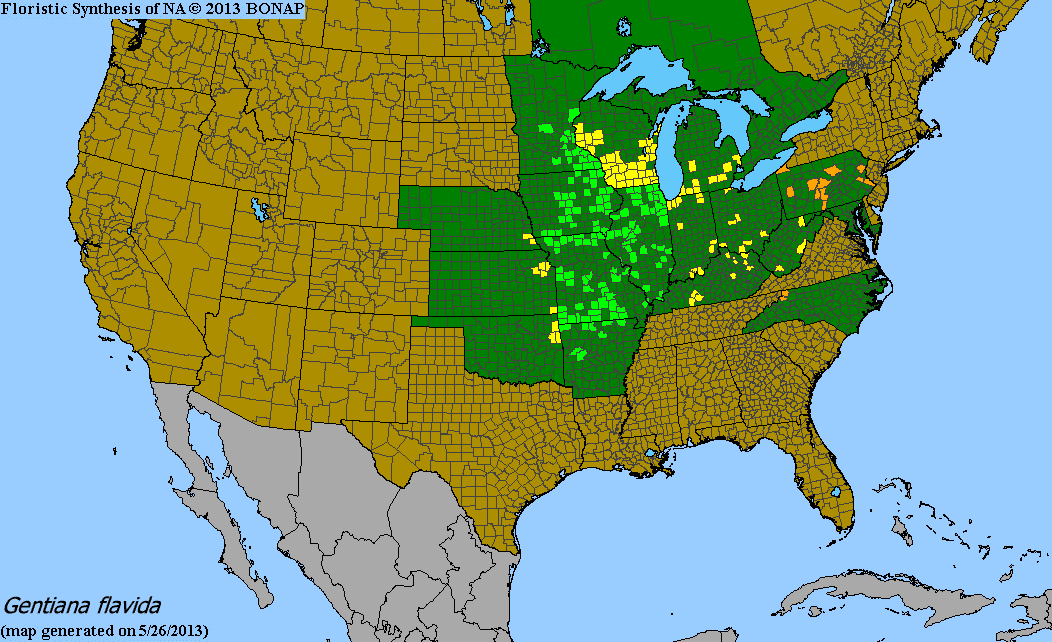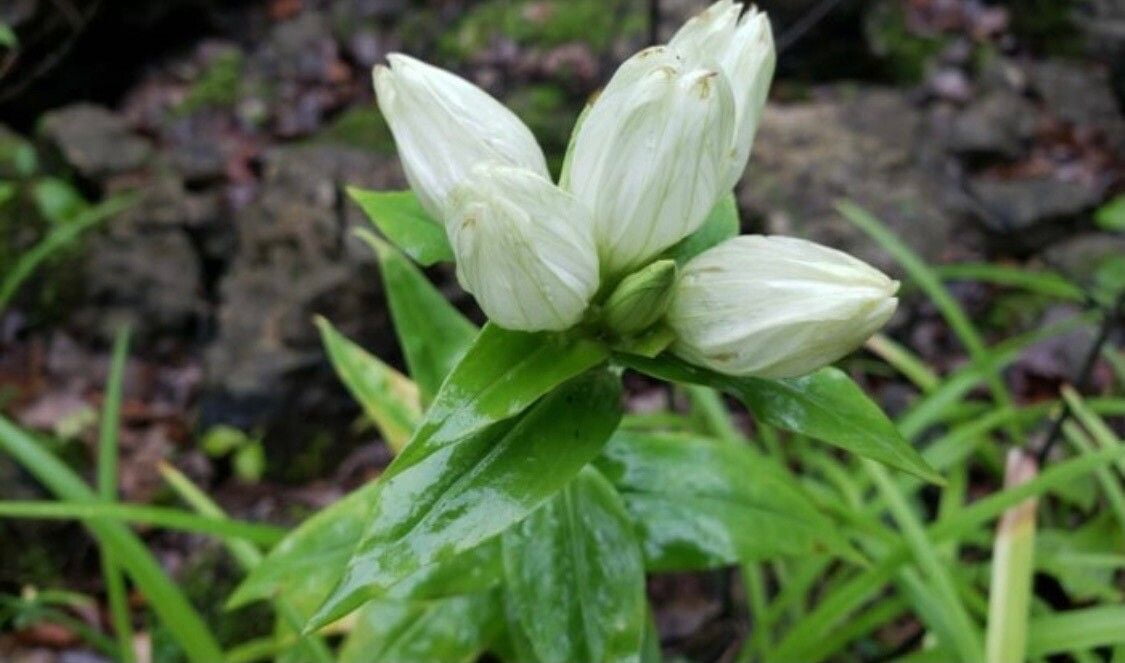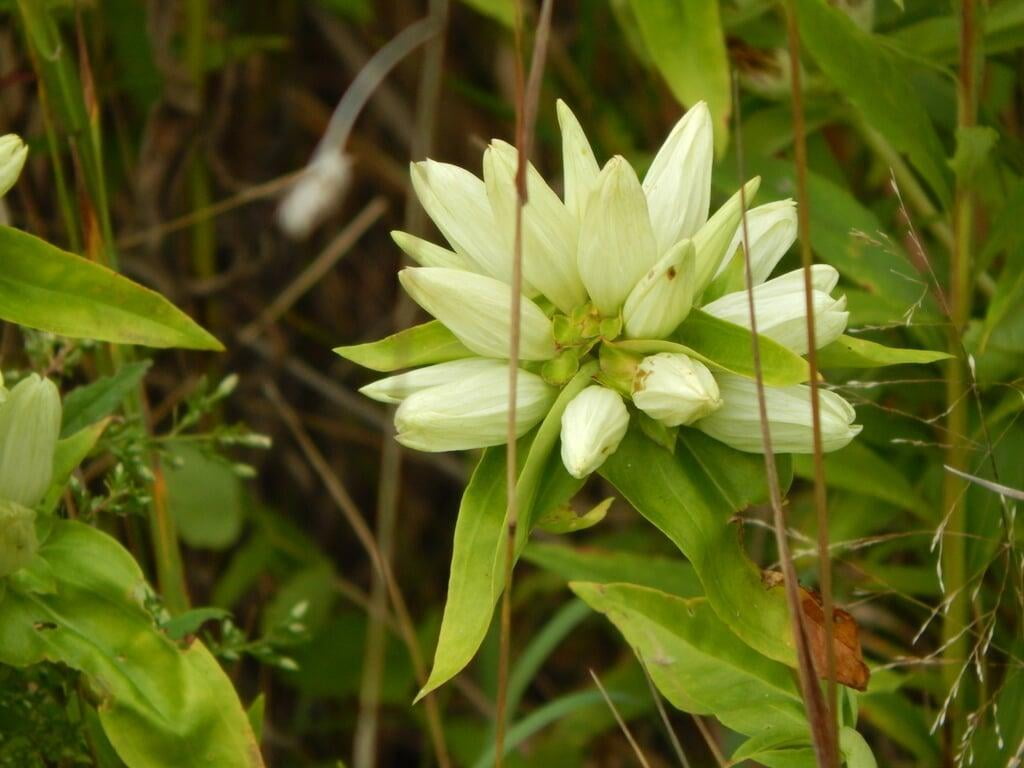Gentiana flavida
Yellow gentian Description:
Gentiana flavida, commonly known as cream gentian or yellow gentian, is a perennial plant species in the Gentianaceae family. It is native to North America and can be found in wet meadows, swamps, and along stream banks in the eastern and central United States.
This plant typically grows to a height of 30-90 cm and has smooth, erect stems with opposite, lance-shaped leaves that are up to 12 cm long. The leaves are dark green and often have a bluish tint.
The flowers of Gentiana flavida are yellow and trumpet-shaped, with five lobes that curl back to reveal the yellow throat. The flowers grow in clusters at the tips of the stems and bloom from August to October. The plant is often pollinated by bumblebees and other large insects.
Gentiana flavida has a long history of medicinal use by various Indigenous groups. The plant is known for its bitter taste, which is due to the presence of bitter compounds called iridoids. These compounds are believed to have various health benefits, including stimulating digestion and appetite. In modern times, the plant is sometimes used in herbal medicine as a digestive aid and to treat liver and gallbladder problems.
Native Range:
Yellow gentian is less far-reaching than some other species; it grows natively in mostly the Midwest. In Minnesota it is limited to the Southeastern part of the state.
Standard Plant Information:
Plant Height: 1' - 3'
Bloom Time: August - October
Preferred Habitat: Does well in part shade to full sun. Often found in meadows and woodlands with moist soil.
Sowing:
For most homeowners, the best option is to scatter seed on the ground by hand broadcasting at a minimum of 16-64 pls ounces per acre. For even coverage, we recommend that you broadcast seed in perpendicular rows across the site to ensure even coverage.
You’ll want to broadcast any grass seed first, which will get raked into the soil lightly. Next, it is ideal to mulch the area lightly with either a clean (no seed) straw or preferably with our native Little Bluestem straw, sold at our retail garden centers. After a light mulching is complete, now it’s time to broadcast your native wildflower seeds, which should not be raked into the soil. A good rain or watering is sufficient to cover the seed.
Planting:
Simply dig a hole in the soil slightly larger than the plant’s roots. Ensure that the soil line of the plant is maintained during the transfer (i.e. the plant should be at the same level with the ground as it was in the pot). Pack any loose dirt back around the plant and make sure you water it well the same day to ensure it has the best chance of survival.









